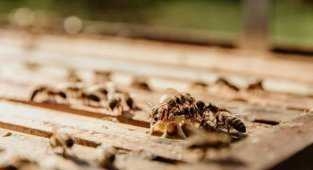Kiwis are pear-shaped birds native to New Zealand. Here are some interesting facts about the life of these flightless creatures. 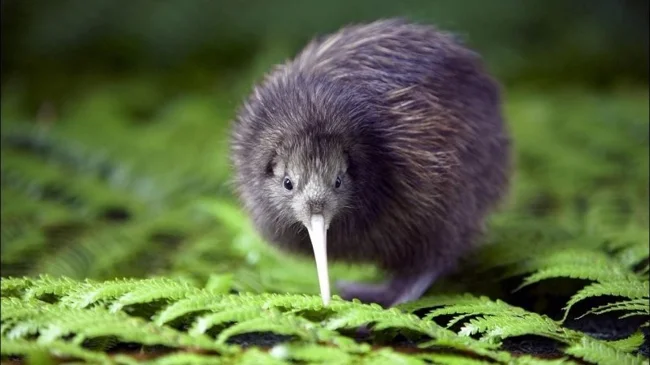
Who remembers their period as a “rebellious teenager”, when they told you one thing, but out of spite you did the opposite? So, kiwis, apparently, never grew out of this age! They looked at how other birds worked and did everything exactly the opposite. So today it’s not clear who the kiwi is at all. No, according to the documents, of course, it’s a bird. But in terms of characteristics it is more reminiscent of a beast.
Kiwi is a feathered oddity from the infraclass of ratites. Today, scientists count 5 types of kiwi (sour fruits don’t count!), and all of them are registered in New Zealand. Birds arrived on the islands approximately 62-30 million years ago from Australia. Yes, it turns out that not only critters and marsupials lived there! 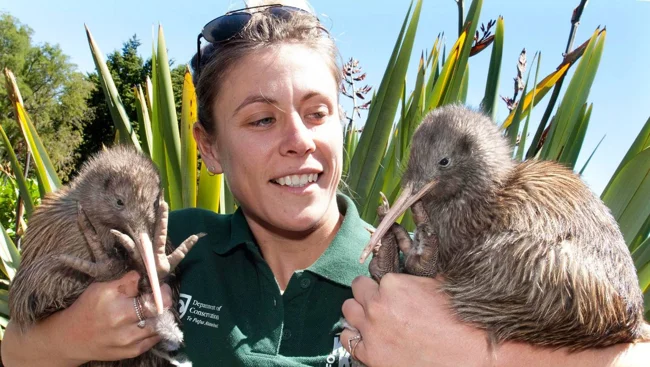
The entire external and internal appearance of these creatures completely contradicts the very concept of “birds”. Let's go outside: feather. Yes, technically kiwis have feathers, but in fact they have evolved so much that “it” now looks just like wool. A fashionable fur outfit helps birds maintain a constant body temperature at +38⁰C. For poultry this is extremely low: chickens and ducks feel more or less at a body temperature of 40⁰C. 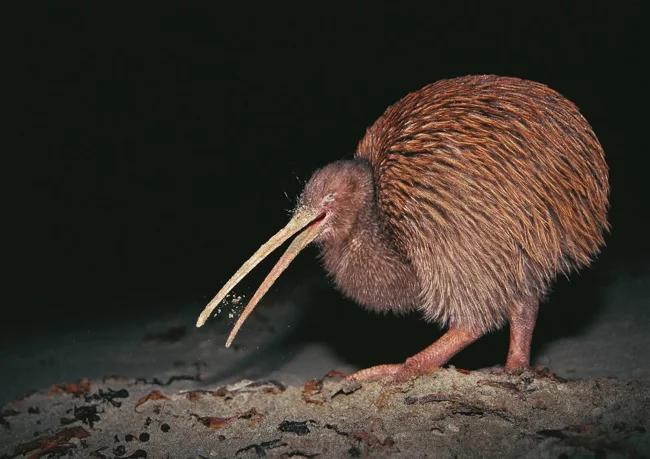
Inside, too, not everything is like normal birds. Our fruits weigh quite a bit: the largest types are no heavier than domestic chicken - from 1.3 to 4 kilograms. But most of this weight comes from very strong and heavy bones. In all normal birds they are hollow. So the birds lightened the structure in order to rise into the air. Kiwi is an exclusively pedestrian companion, so he compacted his structure and filled it with bone marrow, just like mammals. 
The lifestyle of our heroes also bears little resemblance to the typical bird routine. During the day, these are timid and cowardly creatures that hide in their many deep holes. And at night, the birds seem to be possessed by evil spirits. The mistrustful creatures, having emerged from cover, scream heart-rendingly and run throughout their territory. And this, for a minute, is from 2 to 100 hectares! 100 football fields for one Kiwi, Karl! In their night forays, birds rely on hearing, keen sense of smell and touch. They even have sensitive vibrissae hairs on their heads - just like cats. With the help of their whiskers, kiwis search for tasty treats in the ground: the bird first digs everything up with its strong paws, and then sniffs and “feels” with its beak. 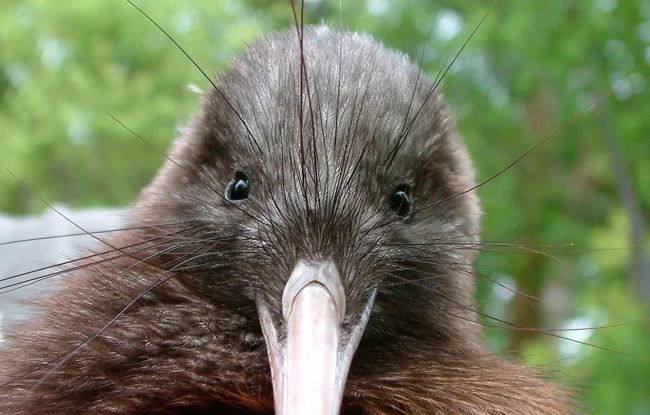
The birds fiercely defend their patch of forest. Of course, things rarely go beyond demonstrations and screams, but to the point: strong claws and a clear blow with the beak can permanently incapacitate an opponent. Most often, males fight, and their confrontation is especially strong during the mating season - approximately 9 months a year, from June to March. At this time, sexually mature 3-5 year old individuals form a pair for the next 20 years. 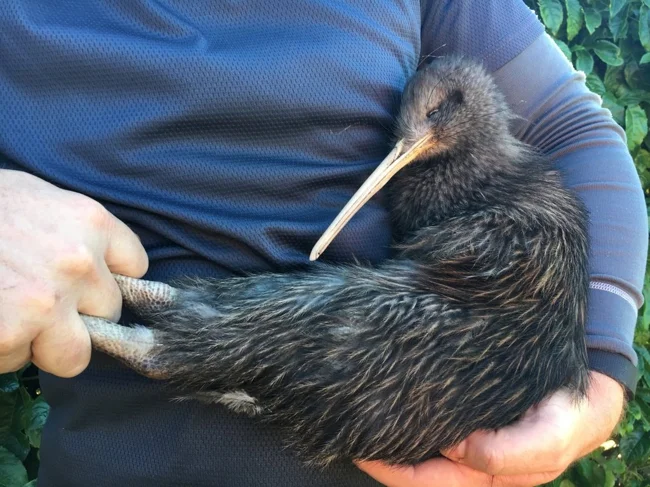
Our Don Juans do not have any special gadgets to attract ladies. Therefore, they simply persistently follow the chick they like and grunt. In the worst case, a lady can attack a particularly impudent suitor - in kiwi, females are slightly larger than males. But in the best case, she will become his faithful friend for many years and give birth to a bunch of children. 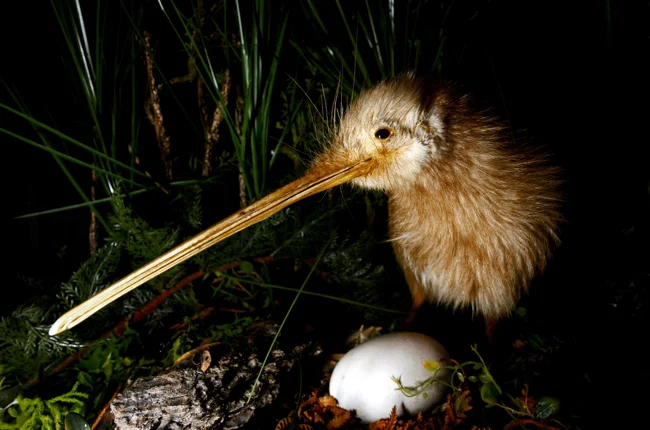
Speaking of which. How do most birds hatch their chicks? First they incubate, then feed, and then feed again until the healthy baby learns to fly and eat on its own. Well, kiwis... just lay big eggs! Caring for offspring? No, we haven't! The size of one kiwi egg can reach 450 grams - almost 1/4 of the bird itself. In addition, it contains a huge amount of yolk - up to 65%. The egg yolk serves as a supply of nutrients for the embryo, but in other birds its amount does not exceed 40%. 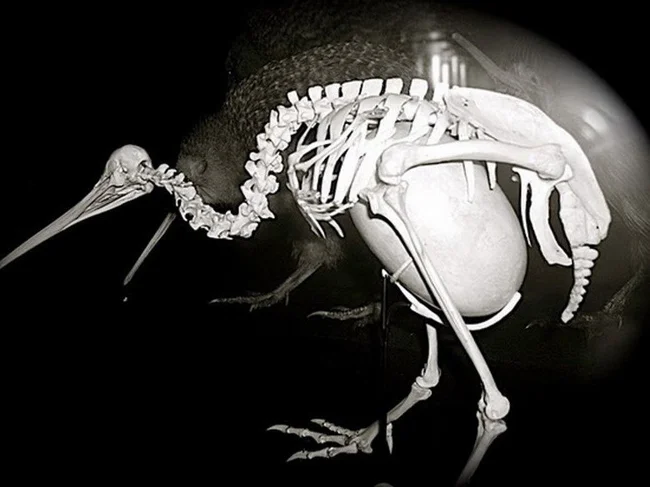
It takes a female about a month to give birth to such a kinder surprise. All this time she eats three times more than usual, and hobbles very awkwardly, her legs spread wide apart. In the last few days before laying, it is difficult for her to move and eat: the huge egg takes up all the free space. That is why, after laying, most of the care goes to the male’s wings. He will diligently hatch the egg for about two months. But as soon as the baby begins to hatch, the parents quickly disappear from the life of the newborn and leave him to his fate. 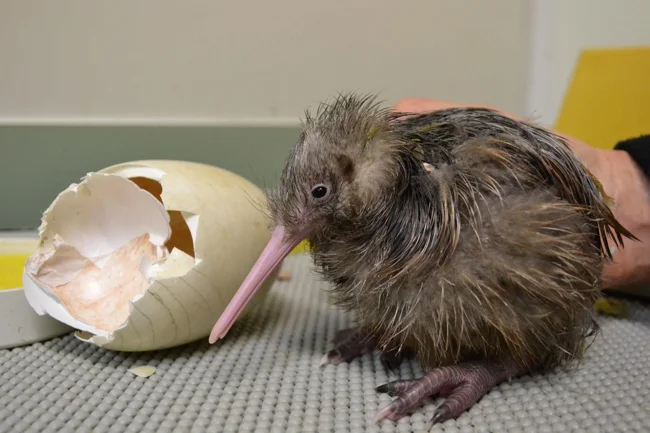
But the chick does not need the help of its parents. It is born fully formed and covered in feathers. He is in no hurry to go out for a walk - there were so many nutrients in the yolk that the baby can live practically without food for about two weeks after hatching. Later, of course, he will learn to find food for himself, and a little later, he will find his own territory. 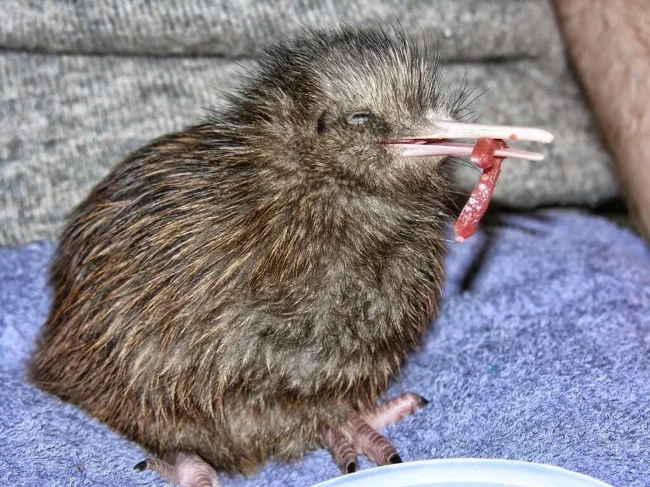
This survival strategy worked flawlessly until people came to the islands. In New Zealand there were no land predators that could eat an egg or chick. Well, the flying meat-eaters could not effectively hunt the nimble young kiwi, which also added to the chances of survival. Today, chicks are hunted by dogs, cats and ferrets, so that only 5% of chicks survive to adulthood.
Now all types of kiwi are on the verge of extinction, and work is being carried out on each to restore their numbers. And since people all over the world know and love the kiwi bird, everything will be fine!
0 comments
